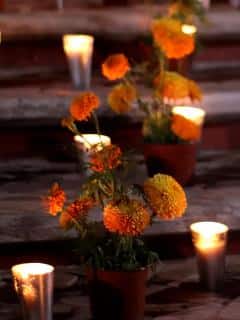

A religious celebration to honor all saints, November 1st has become the day when we pay our respects to those who have passed away with Chrysanthemum flowers. It is the time to gather as a family to flower the tombs of the dead. What is the meaning of this tradition?
Read also: grow chrysanthemum
Other flowers loaded with meaning:

This day, in Christian tradition, is one of praying to saints. Seeing how these ordinary people led their extraordinary lives, we glimpse a path for all of humanity.
It bears testimony during All Saint’s Day to the Christian’s hope in the face of death, which is that eternal life follows after life on earth.
This is probably the reason why All Saint’s Day, as centuries came and went, merged with another feast in honor of all those who have passed away the “All Souls’ day“. This second feast is for praying for the souls of all those who died and aren’t necessarily saints. Its date is November 2nd on the religious calendar.
These two dates being so close lead to confusion. Since November 1st was an official holiday but not the day after, a practical custom arose: people would visit the cemetery for souls of family and kin on All Saint’s Day instead. This was indeed the only available free time to decorate tombs of the departed with flowers (not necessarily chrysanthemum).
In the XVIIIth century, cemeteries transferred further out of city centers. Increasingly common “family tombs” meant that the deceased weren’t necessarily buried where they lived, but where they came from instead. This increased the distance when visiting the dead. It couldn’t anymore be part of a day-to-day routine, but became a rarer, more thoughtful moment. This resulted in a need for more introspection. As time passed, commemorating the family’s deceased became more important to people than celebrating the original All Saint’s Day.

by Fabienne Lisse